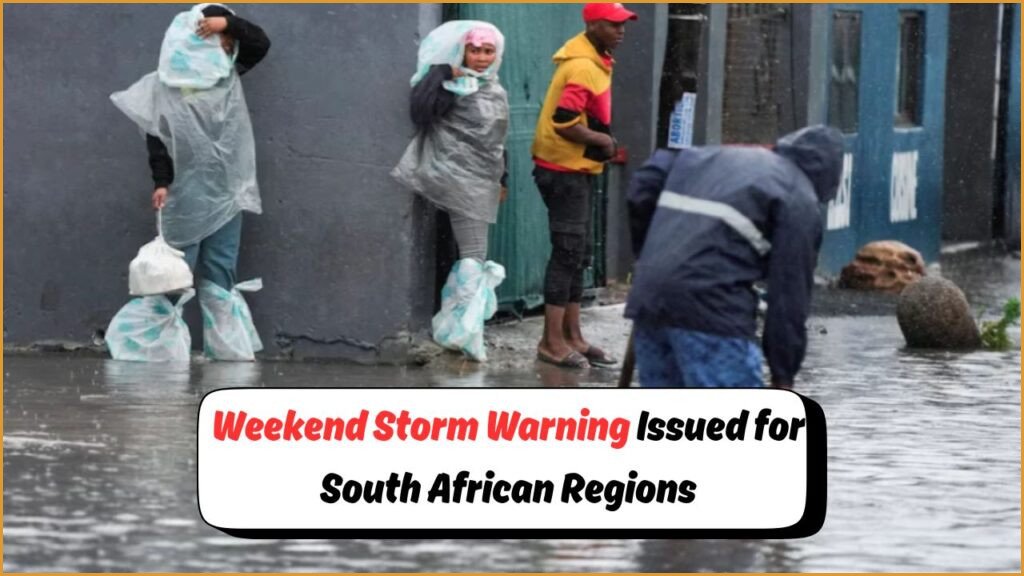Intense Storms and Torrential Rain in South Africa: The unpredictable weather patterns are making headlines once more as intense storms and torrential rain are forecasted to strike several regions across South Africa. Meteorologists have issued warnings, urging residents to brace themselves and stay informed about the impending weather changes. South Africa’s diverse climate often leads to sudden and drastic weather shifts, and this season is no exception. These severe weather conditions not only pose a threat to communities but also to infrastructure and agriculture, which are vital to the country’s economy. With the storm clouds gathering on the horizon, understanding the potential impact and preparing adequately is crucial for everyone in the affected areas.

Regions Most Affected by Intense Storms and Torrential Rain
Recent forecasts have pinpointed several regions that are expected to be hit hardest by the intense storms and torrential rain. The Eastern Cape and KwaZulu-Natal are on high alert, with the South African Weather Service issuing warnings for potential flash floods and strong winds. The topography of these regions, with their mountainous areas and rivers, makes them particularly susceptible to flooding and landslides. Residents are advised to take precautions, such as securing loose outdoor items and avoiding low-lying areas prone to flooding. Local authorities are on standby to provide assistance and updates as the situation develops. In addition to these areas, parts of Gauteng might also experience a spell of heavy rain, which could lead to traffic disruptions and localized flooding. Staying informed through reliable sources is key to ensuring safety during these weather events.
Preparing for Severe Weather: What South Africans Need to Know
Preparation is paramount when facing the threat of severe weather. South Africans in the path of the storms should ensure that they have emergency supplies ready, including non-perishable food, water, and medical supplies. It’s also advisable to have a family emergency plan in place, detailing safe routes and meeting points in case of evacuation. Keeping mobile phones charged and having access to a battery-powered radio can be invaluable for receiving timely updates. For those living in flood-prone areas, sandbags can be used to divert water away from properties. Furthermore, motorists are encouraged to drive cautiously and avoid crossing flooded roads. Community support is also crucial in these times, with neighbors helping each other to secure properties and share resources. By taking proactive steps, the impact of these intense weather conditions can be mitigated, preserving both life and property.
 Urgent Alert: SASSA Beneficiaries Required to Verify IDs Before August 20, Confirms Home Affairs
Urgent Alert: SASSA Beneficiaries Required to Verify IDs Before August 20, Confirms Home Affairs
Climate Change and Its Role in South Africa’s Weather Patterns
The increasing frequency and intensity of storms in South Africa are often linked to broader climate change patterns. As global temperatures rise, the atmosphere holds more moisture, leading to heavier rainfall events. This change amplifies the risk of severe weather, including thunderstorms and cyclones, which South Africa is experiencing more regularly. The country’s geographic position makes it particularly vulnerable to these shifts, with both coastal and inland areas facing unique challenges. Coastal regions may see rising sea levels and storm surges, while inland areas could experience more prolonged droughts interspersed with intense rainfall. Understanding the connection between climate change and local weather patterns is essential for developing effective mitigation strategies. Policymakers and environmental agencies are working towards enhancing South Africa’s resilience to these changes through improved infrastructure and sustainable practices.
Community and Government Response to Weather Warnings
The response to severe weather warnings in South Africa involves a coordinated effort between government agencies, local authorities, and the community. The South African Weather Service plays a critical role in monitoring weather patterns and issuing timely alerts to keep the public informed. In anticipation of the upcoming storms, emergency services are on high alert to respond to any incidents swiftly. Community engagement is equally important, with local organizations often stepping in to provide support to vulnerable populations, such as the elderly and those living in informal settlements. Government initiatives are focusing on improving early warning systems and disaster management strategies to minimize the impact of these events. Public awareness campaigns are also crucial, educating citizens on how to protect themselves and their properties. By working together, South Africans can better navigate the challenges posed by these intense weather conditions, ensuring safety and resilience.
What precautions can residents take to protect themselves during intense storms?
Stay indoors, secure loose items, and listen to weather alerts.
How can communities prepare for potential flooding in the targeted SA regions?
Stock up on emergency supplies and create evacuation plans.
How does the upcoming storm impact local agriculture in the SA regions?
Crop damage and soil erosion could affect agricultural production.








